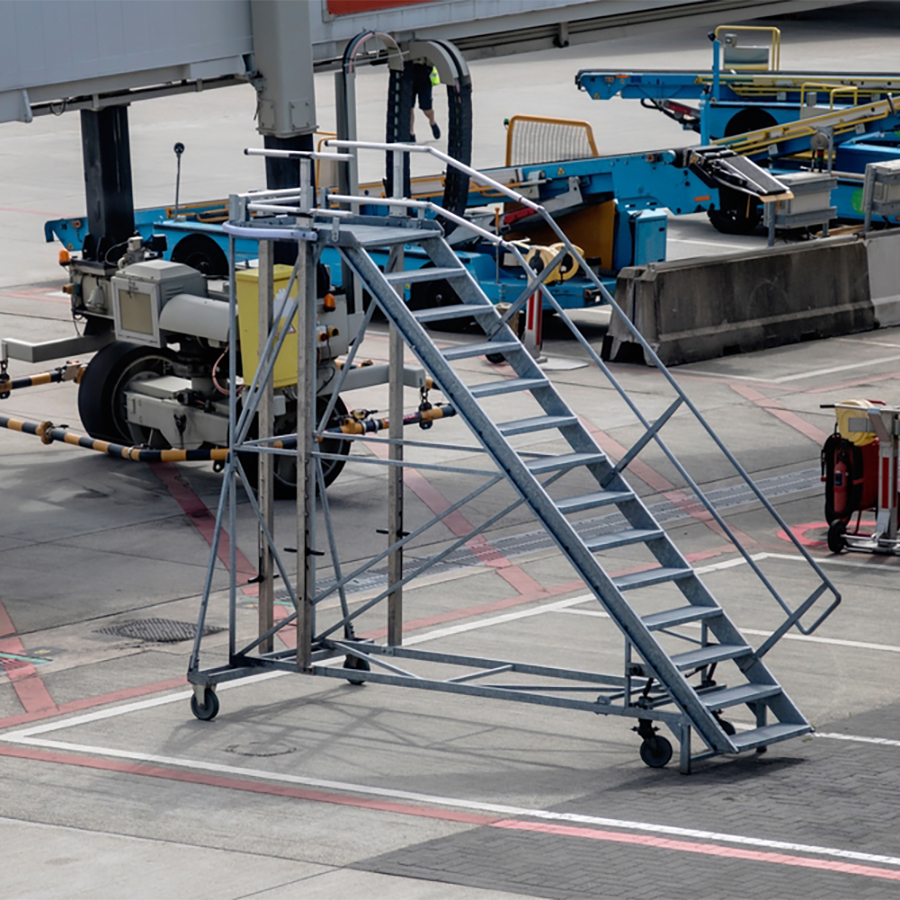What Is GSE Maintenance?
 Ground Support Equipment (GSE) maintenance includes all the methods meant to keep ground support equipment in good working order. This includes periodic inspections, preventive maintenance, repairs, and safety compliance. Effective maintenance is more than just fixing a problem when it occurs. Rather, it is essential to take a proactive approach that ensures problems are resolved before they cause any issues.
Ground Support Equipment (GSE) maintenance includes all the methods meant to keep ground support equipment in good working order. This includes periodic inspections, preventive maintenance, repairs, and safety compliance. Effective maintenance is more than just fixing a problem when it occurs. Rather, it is essential to take a proactive approach that ensures problems are resolved before they cause any issues.
GSE Maintenance: 5 Key Objectives
- Regular Maintenance: Regular maintenance ensures all the equipment is working properly and eliminates the chances of accidents caused by mechanical failures.
- Operational Efficiency: When the equipment is maintained correctly, it reduces downtime and ensures smoother airport operations.
- Minimal Cost Control: Avoiding maintenance can cause expensive repairs and shorten equipment service life.
Types of GSE Maintenance
There are multiple strategies for keeping GSE up:
Preventive Maintenance
Preventive maintenance consists of scheduled ones to prevent breakdowns before they happen. This includes:
- Regular checks according to the manufacturer’s recommendations.
- Lubrication of moving parts.
- Rehabilitation of worn-out components before catastrophic failure.
Corrective Maintenance
Corrective maintenance is repairs performed after the discovery of faults in the equipment. This type often involves:
- Troubleshooting when things go wrong with equipment.
- Carrying out required repairs or replacements.
- Quickly implementing fixes to minimize the impact on operations.
Predictive Maintenance
Predictive maintenance uses data analytics and monitoring technologies to determine when maintenance should be performed based on the actual condition of the equipment. This approach includes:
- Implementing sensors to track equipment performance as it happens.
- Use data trends to predict possible failures.
- Doing maintenance based on predictive insights rather than fixed intervals.
Key Components of GSE Maintenance
- Inspection Procedures: GSE maintenance mainly relies on inspection. Such procedures generally include:
- Visual Checks: Looking for wear or damage of equipment components.
- Functional Tests: Conduct a detailed testing process to confirm all system components are functional.
- In-Depth Inspection: Thorough testing of critical elements like brakes, hydraulics, electrical systems, safety features, etc.
- Servicing and Repairs: Servicing includes oil changes, filter replacements, lubricating moving parts, and other routine chores. Quick repairs prevent problems before they become significant issues.
Record Keeping and Compliance
You must keep proper records of every maintenance you do if it needs to comply with something like ISO 9001. This includes:
- Keeping meticulous records of inspections, repairs, and parts replacements.
- Conduct safety measures through periodic audits.
- Learn from historical data for better maintenance in the future.
Regular inspection, servicing, compliance documentation, skilled labor training, and technology integration into monitoring processes significantly extend equipment lifetime and play a major role in overall airport performance. To learn more, contact us today!
